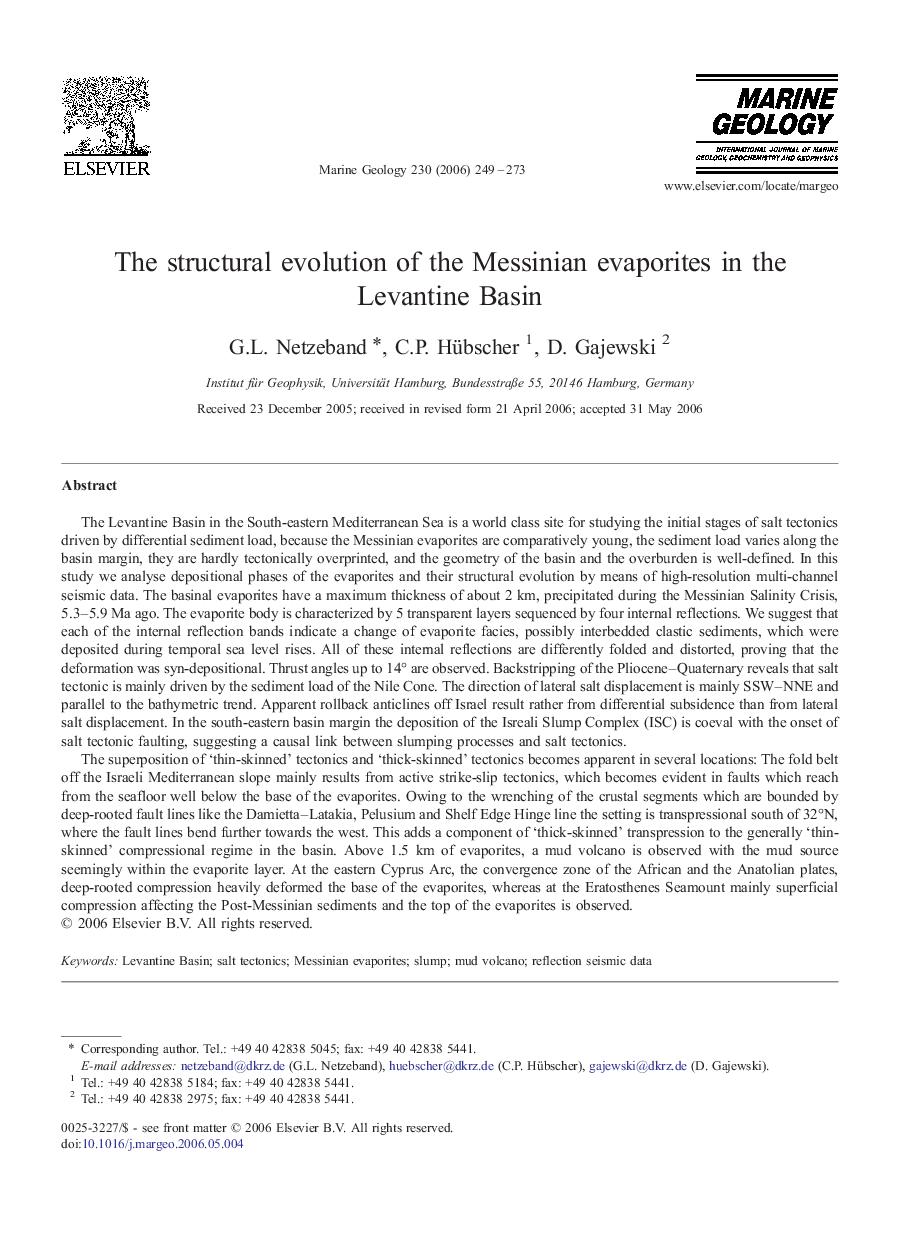| Article ID | Journal | Published Year | Pages | File Type |
|---|---|---|---|---|
| 4719739 | Marine Geology | 2006 | 25 Pages |
The Levantine Basin in the South-eastern Mediterranean Sea is a world class site for studying the initial stages of salt tectonics driven by differential sediment load, because the Messinian evaporites are comparatively young, the sediment load varies along the basin margin, they are hardly tectonically overprinted, and the geometry of the basin and the overburden is well-defined. In this study we analyse depositional phases of the evaporites and their structural evolution by means of high-resolution multi-channel seismic data. The basinal evaporites have a maximum thickness of about 2 km, precipitated during the Messinian Salinity Crisis, 5.3–5.9 Ma ago. The evaporite body is characterized by 5 transparent layers sequenced by four internal reflections. We suggest that each of the internal reflection bands indicate a change of evaporite facies, possibly interbedded clastic sediments, which were deposited during temporal sea level rises. All of these internal reflections are differently folded and distorted, proving that the deformation was syn-depositional. Thrust angles up to 14° are observed. Backstripping of the Pliocene–Quaternary reveals that salt tectonic is mainly driven by the sediment load of the Nile Cone. The direction of lateral salt displacement is mainly SSW–NNE and parallel to the bathymetric trend. Apparent rollback anticlines off Israel result rather from differential subsidence than from lateral salt displacement. In the south-eastern basin margin the deposition of the Isreali Slump Complex (ISC) is coeval with the onset of salt tectonic faulting, suggesting a causal link between slumping processes and salt tectonics.The superposition of ‘thin-skinned’ tectonics and ‘thick-skinned’ tectonics becomes apparent in several locations: The fold belt off the Israeli Mediterranean slope mainly results from active strike-slip tectonics, which becomes evident in faults which reach from the seafloor well below the base of the evaporites. Owing to the wrenching of the crustal segments which are bounded by deep-rooted fault lines like the Damietta–Latakia, Pelusium and Shelf Edge Hinge line the setting is transpressional south of 32°N, where the fault lines bend further towards the west. This adds a component of ‘thick-skinned’ transpression to the generally ‘thin-skinned’ compressional regime in the basin. Above 1.5 km of evaporites, a mud volcano is observed with the mud source seemingly within the evaporite layer. At the eastern Cyprus Arc, the convergence zone of the African and the Anatolian plates, deep-rooted compression heavily deformed the base of the evaporites, whereas at the Eratosthenes Seamount mainly superficial compression affecting the Post-Messinian sediments and the top of the evaporites is observed.
